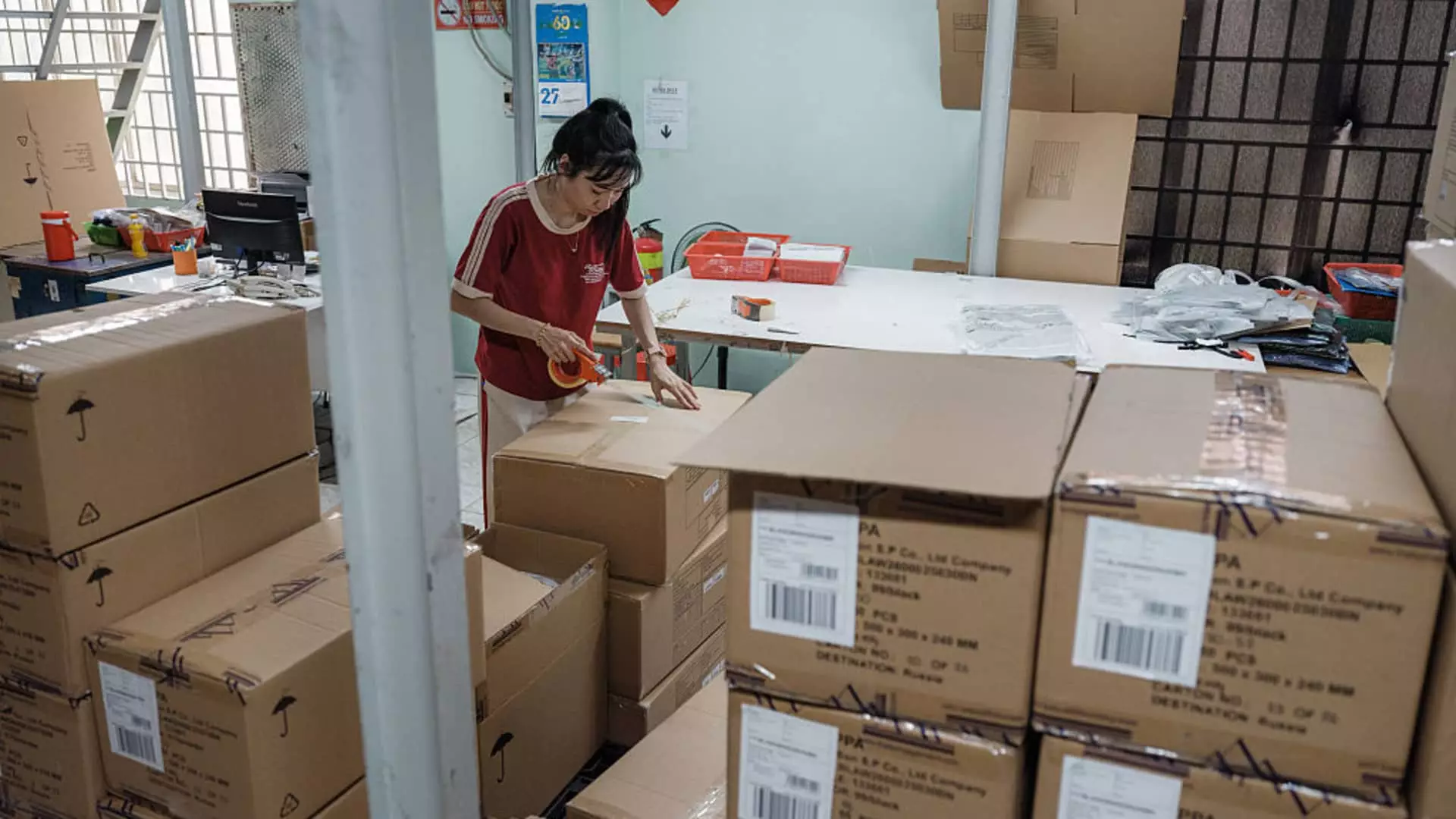In a climate fraught with economic uncertainty, the announcement of a tentative tariff reduction on Vietnamese imports might seem like a victory for the retail sector. However, beneath this veneer of optimism lies a troubling reality: the very notion of reprieve is illusory. While some industry leaders clap for a potential drop from an unworkable 46% to a more manageable 20%, the truth is that these figures are only superficial bandages on a deeper wound inflicted by the ongoing trade discord. The phased or tentative nature of this agreement exemplifies the fragile footing upon which the retail and manufacturing sectors find themselves. It lends a false sense of security that could quickly unravel, exposing companies and consumers alike to long-term destabilization.
The problematic aspect is not merely the uncertainty surrounding the implementation dates or tariff thresholds, but the inherent vulnerability this creates. Companies are forced into a perpetual state of planning with one eye on fleeting political promises rather than stable economic policies. Such volatility discourages meaningful investment, fosters panic-driven decision-making, and perpetuates an environment where profits are constantly threatened by shifting tariffs. In essence, these half-hearted trade concessions are akin to quick fixes masking a systemic failure that could jeopardize not just industry giants but the broader economy.
Market Disillusionment and Strategic Miscalculations
While some executives celebrate what they perceive as a beneficial compromise, many are acutely aware of the broader implications. The industry’s reliance on Vietnam, a hub of manufacturing that often remains under Chinese influence, exposes a fundamental flaw in America’s supply chain resilience: overdependence on a few geopolitical flashpoints. Diversification efforts into Cambodia, Bangladesh, and Malaysia are steps in the right direction, but they are insufficient to fully mitigate the risks inherent in globalized manufacturing chains.
This reliance on Vietnam and Southeast Asia reveals a broader misjudgment: the assumption that tariffs will or can be effectively managed without disrupting the intricate balance of global trade. Retailers and brands have wagered significant portions of their supply chains on cost-efficient hubs like Vietnam, only to face the destabilizing specter of tariffs that could negate years of strategic planning. Such miscalculations reveal the myopia of corporate leadership that prioritizes short-term cost savings over long-term resilience. It also underscores a failure to recognize that trade disputes, especially those driven by domestic political narratives, are inherently unpredictable.
Moreover, the expectation that a rate as low as 20% will sideline the economic harm ignores the cascading effects on consumer prices. When corporations announce plans to raise retail prices—whether by 7 dollars on shoes or increased costs across the board—they calculate the impact on margins, but underestimate the financial strain on consumers. The typical shopper, already stretched thin by inflation and stagnant wages, might find their discretionary spending further squeezed, potentially triggering a downturn in retail sales. Such outcomes counteract any perceived victory in tariff negotiations and instead point to a more insidious risk: economic fragility rooted in reactive policy.
The Consumers’ Silent Suffering
In the end, these tariffs and their tentative adjustments are less about economic strategy and more about the silent, often unacknowledged toll on everyday Americans. As prices inch upward and supply chains face mounting stress, the average consumer becomes collateral damage in a geopolitical game that often feels disconnected from their daily life. It is important to highlight that the true cost of these tariffs extends beyond corporate balance sheets; it impacts the very fabric of consumer trust and economic stability.
Retailers are caught in a dilemma—should they absorb the costs or pass them on? Many opt for a hybrid approach, raising prices incrementally to preserve margins. But this approach only fuels inflationary pressures, creating a pernicious cycle where consumers have less discretionary income, leading to reduced spending and further economic slowdown. The narrative of tariffs protecting national interests falls apart when considering the real-world hardships faced by families who see their purchasing power eroded.
Furthermore, this incremental approach to price hikes risks eroding consumer confidence over the long term. If shoppers perceive that everyday necessities—shoes, clothing, household goods—are becoming unaffordable, the repercussions could ripple across the entire economy. A fragile bias towards protectionism, cloaked in the language of economic nationalism, ultimately fosters economic insecurity that threatens liberal democratic ideals of shared prosperity and social mobility.
Policy Failures and the Need for Genuine Economic Strategy
What this situation exposes, fundamentally, is a glaring failure of strategic foresight on the part of policymakers and corporate leaders alike. The focus on tariffs as a tool to leverage political aims overlooks the complexity of modern supply chains and the deep interdependence among nations. Instead of fostering resilience, recent policies have sown fragmentation, with each negotiation affecting millions of livelihoods.
An authentic approach should prioritize a balanced, multilateral effort to address trade disparities without resorting to punitive tariffs that threaten stability. Such a strategy requires patience, diplomacy, and a recognition that sustainable economic growth depends on cooperation rather than confrontation. Short-term tariff adjustments do little more than provide political theatre, distracting from the urgent need for structural reforms that can foster innovation, fair labor practices, and diversified global partnerships.
The tentative tariffs relief is a fleeting reprieve—one that masks the deeper malaise afflicting the global economy. It exemplifies a misguided fixation on tactical wins rather than systemic solutions. Ultimately, a truly resilient economy must build around principles of fairness, sustainability, and collaboration—values that seem increasingly absent from the current political and economic landscape.

